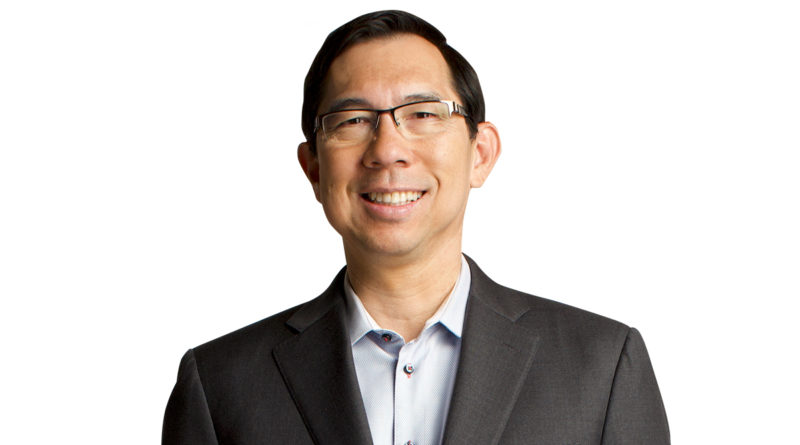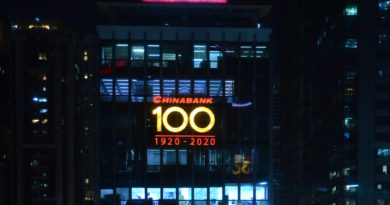TG Limcaoco: BPI’s new ‘geek’ president and CEO plots the bank’s course in digital banking
New Bank of the Philippine Islands (BPI) president and CEO Jose Teodoro “TG” Limcaoco, 59, wants to turn the publicly-listed bank into the “clear, undisputed leader in the digital banking space.”
Speaking to media on his first day at the helm of the Ayala family-led bank on Thursday, Limcaoco says digital banking is one of the five priorities of the bank under his leadership.
“We need to invest in technology, but we need to make our digital tools available for each and every customer,” he says.
Limcaoco, who holds a BS degree in mathematical sciences from Stanford University and who worked at global tech giant IBM in the early 1980s, describes himself as a “digital geek” who loves digitalization.
Digitalization is expected to be key in a couple of Limcaoco’s other priority areas: savings services and the customer experience.
“Banking is about savings and helping people gain financial wellness and stability. To that end I want to close the gap in funding leadership. I want our branches to be transformed,” says Limcaoco.
“As digital technology takes off, there will be less servicing at the bank and we need to move the branches towards sales points rather than service points. Because of this, we are looking at the possibility where customers will have an omni-channel experience where you can complete your transaction either digitally or physically or begin at one [channel] and complete it on another,” he explains.
He also points out that the bank needs to harness the power of data to understand the transactions and needs of customers and hence serve them better.
“Our digitalization efforts will enable these initiatives that will greatly enhance the customer experience, because today and tomorrow the customers will always be the key and should be the focus of all our efforts,” he says.
Inclusive and sustainable banking
Another of Limcaoco’s priorities is to increase the share of small and medium enterprises (SMEs) and the consumer sector in the loan book in line with BPI’s push for more inclusive banking.
“I’ve always thought of myself as a retail banker, a consumer banker, and what we want to do is to continue to push our leadership in those two segments and make sure that we tap more customers and provide more services and products to these sectors,” he says.
Limcaoco headed BPI’s retail banking arm, BPI Family Savings Bank, as president from 2010 to 2015 and investment banking arm BPI Capital three years prior. He wore different hats at publicly-listed Ayala Corporation, the bank’s biggest shareholder, as chief finance officer, chief risk officer, and chief sustainability officer before returning to the BPI fold this year.
He takes the reins at BPI from predecessor Cezar “Bong” Consing at a time when the domestic banking industry still struggles to cope with the economic fallout of the Covid-19 pandemic and the many difficulties in reaching customers through traditional channels.
Among the many banks not spared from the negative impact of the global health crisis, BPI, the country’s fourth-largest bank in terms of assets, posted a 26% drop in net income last year to P21.4 billion after it booked a five-fold increase in loan loss provisions. It is also folding in its retail arm via a merger.
Now on Limcaoco’s shoulders are the hopes of the board and top shareholders that he can lead the Philippines’ oldest lender smoothly out of the pandemic and towards a brighter future in the digital age, even as a few competitors have quickly leveraged digital platforms to attract thousands of new customers.
Limcaoco says that digitalization is “what’s key to the future of banking and that’s what will allow banks to serve more people more efficiently.”
“If we do our digital technology and our digital rollout properly we will be able to reach far more people than we ever do today. We need to make applications that are easy to understand, easy to download, easy to use and are actually fun to use,” he points out.
Rounding out his list of five priorities, Limcaoco talks enthusiastically about the bank’s plan to adopt environment, social, and governance (ESG) goals in its operations.
“For those who know me, I’m a big believer in sustainability, and we need to move banking towards a truly sustainable banking model, which in the simplest form really means that everything we do at the bank is to benefit not only our shareholders, not only our customers, but also our community and the country in general,” says Limcaocko.
For example, the bank is looking to reduce waste and power consumption and improve green lending. It aims to bring down its loan exposure to the coal sector by half by the end of 2026.
Challenges and opportunities
Looking ahead, BPI’s recovery will depend on how soon the country itself can emerge from the health crisis, Limcaoco says.
“We had a second lockdown and we have to see how that pans out going forward,” he notes, referring to the tighter quarantine measures reimposed from late March to the end of April this year amid a surge in Covid-19 cases.
On whether BPI can post higher earnings this year than last year, Limcaoco was cautious, saying “it remains to be seen” given that loan growth remains muted and the bank still has to set aside for loan loss provisions.
Despite the ongoing pandemic, the bank is keen to take advantage of opportunities the crisis also brings about. In particular, BPI may potentially bid for the consumer portfolio of Citigroup, which recently announced that it was exiting the consumer banking business in 13 international markets, including the Philippines.
“People have reached out to us to tell us what the plans are for the Philippines. It’s quite public knowledge that they [Citi} will exit and will try to sell the business. We have told them that as soon as there’s any information to send us the information and we will take a look at it. Most likely we will be interested. To be honest, it is a great business,” says LImcaoco.
Both Citi and BPI are among the top five credit card players in the country. If the BPI and Citibank credit card portfolios were combined, it would almost double BPI’s business in the segment.
“Even when you talk about their deposit side or the people who invest with them – the retail banking side not the credit card side – I think you’ll find that the customer profiles are very similar. People go to Citi because of the name, the trust they have in the institution, and I think that’s our biggest advantage also. We have the best name in the Philippines,” says Limcaoco.
Making BPI’s star in the Philippine banking industry shine even brighter is one goal the Filipino techie seems ready to take on.
[Investing? Get MoneySense’s 2021 Investing Issue featuring investment guru Ron Acoba here]
Other stories:




